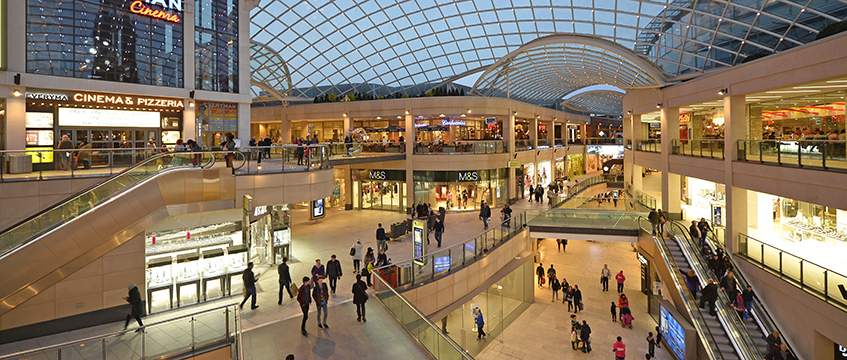Shopping centre investment propped up by local authority spend
UK shopping centre investment plummeted by more than 80% in the first half of the year compared with the same period in 2018, in what has been the worst half for deal activity on record.
Less than £400m has been invested in shopping centre assets so far in 2019, which is set to be the lowest annual figure since 2012 if the current rate of spend continues, a far cry from the halcyon figure of £6bn back in 2014.
UK shopping centre investment plummeted by more than 80% in the first half of the year compared with the same period in 2018, in what has been the worst half for deal activity on record.
Less than £400m has been invested in shopping centre assets so far in 2019, which is set to be the lowest annual figure since 2012 if the current rate of spend continues, a far cry from the halcyon figure of £6bn back in 2014.
According to research compiled by Radius Data Exchange, spend from traditional domestic buyers has fallen from 90% to 62% since 2012. Despite the slump in the value of sterling in the global financial markets, overseas investment has also slowed significantly, coming down from more than £1bn per year in 2012 to just under £350m in 2018. So far this year, less than £50m of shopping centre stock bought can be attributed to foreign buyers.
European and North American money still makes up the lion’s share of this total overseas spend, clocking up a combined 65% of all capital pumped into the market since 2012.
A serious contribution continues to come from local authorities investing in commercial real estate, with 28% of council expenditure on property since 2013 being on retail and leisure assets. Within these figures, local authorities have increased their share of spend in the shopping centre market from zero in 2012 to 22% last year, and to 31% to date this year.
Investor unease surrounding Brexit, retail insolvencies and reducing consumer spend and footfall, as well as soaring online retail spend, has meant that the pattern of softening yields has continued its outward trajectory since 2016. Prime assets have experienced stronger yield retention than their secondary counterparts.
The disconnect between purchaser and vendor, or valuation lag, means that yield movement will creep outwards until a right-pricing in the sector has been mutually agreed by buyers and sellers. If there is to be a perpetuation of CVAs and administrations, this process will be merely prolonged.
A combination of these macro- and micro-economic factors has created a buyer’s market. With tenants’ financial margins becoming wafer thin, challenges to property owners on rents will continue and will therefore act as a deterrent to potential investors going forward.
The prime end of retail will remain attractive to both domestic institutions and overseas buyers, while vendors in the secondary market may well have to rely on local authority investment to balance their books.
To send feedback, e-mail james.child@egi.co.uk or tweet @JamesChildEG or @estatesgazette
Photo: imageBROKER/REX/Shutterstock











